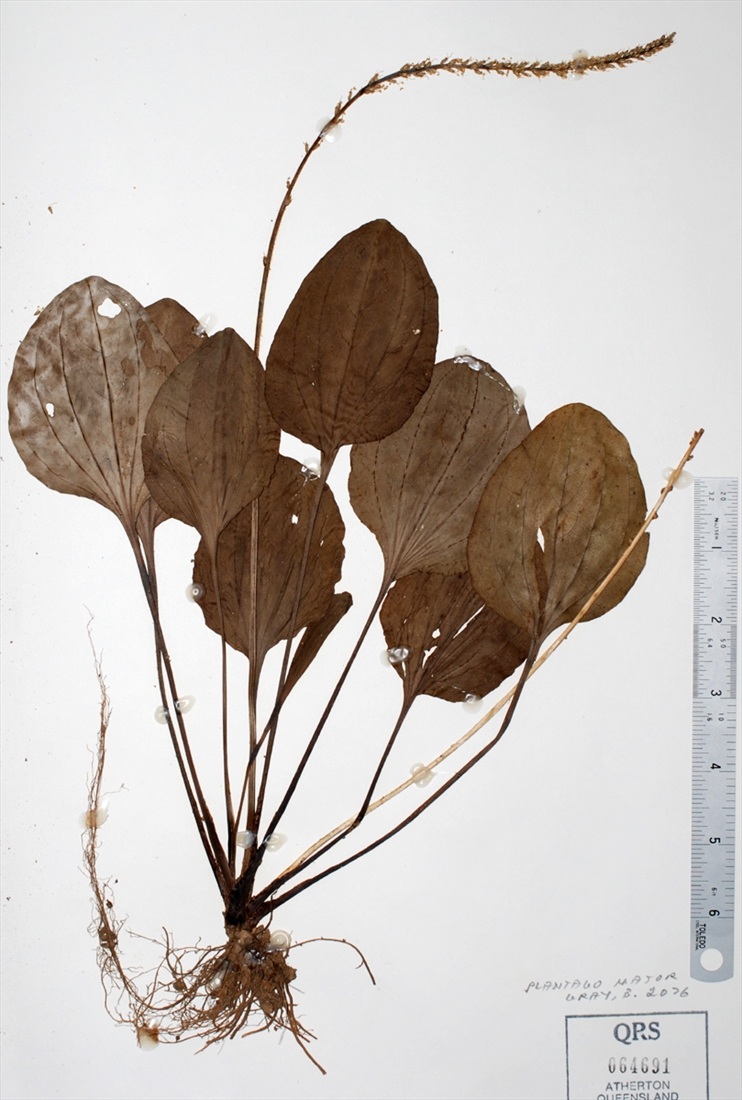Australian Tropical Rainforest Plants - Online edition
Plantago major L.


Linnaeus, C. (1753) Species Plantarum 1: 112. Type: Habitat in Europa ad vias.
Plantain, greater; Greater plantain; Greater ribwort
Perennial acaulescent herbs, variable with short stout, erect, truncate, rootstocks and numerous adventitious roots.
Leaves in a basal rosette; Leaf blades broadly ovate to cordate, about 7.5-14 x 5-8 cm, petioles about 3-18 cm long, often much longer than the leaf blades. Venation obvious, consisting of 5-9 longitudinal veins each of which is depressed on the upper surface of the leaf blade. Petioles channelled on the upper surface, bases expanded and clasping the stem.
Flowers borne in spikes about 8-15 cm long. Peduncles about 12-20 cm long. Sepals keeled, about 2.5 x 1.5 mm. Corolla tuba green, bottle-shaped, about 2.2 x 1 mm. Corolla lobes cream to brown, triangular, reflexed, about 1 mm long. Staminal filaments about 4-5 mm long, attached to the lower half of the corolla tube. Anthers about 0.9 mm long. Ovary green, about 1-12. x 0.8 mm. Style + stigma about 5 mm long, shortly plumose.
Features not available.
An introduced species in NEQ and in south eastern Queensland and southwards to southern Australia. Altitudinal range from near sea level to 720 m. Grows along tracks, roads and openings in rainforest, notophyll vineforest, Eucalypt forest, various types of woodland, wooded grassland and moist places in grassland. Also from throughout Europe, northern and central Asia, introduced all over the world.
A weed of disturbed places.
Treatment for dysentery in India and for diarrhoea, malaria and earache in southern Africa (Webb 1948).





